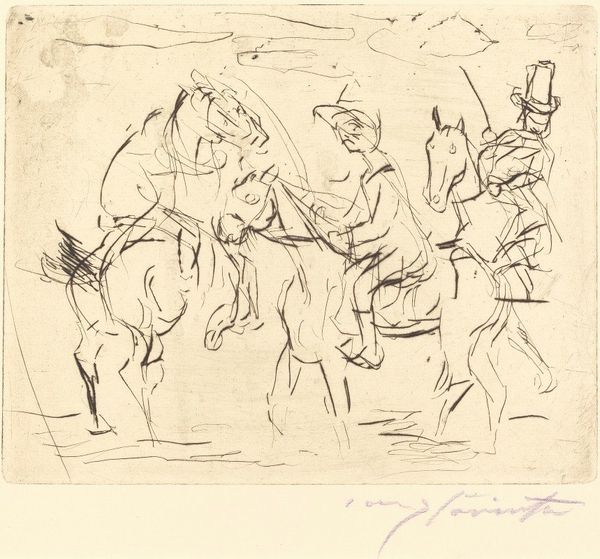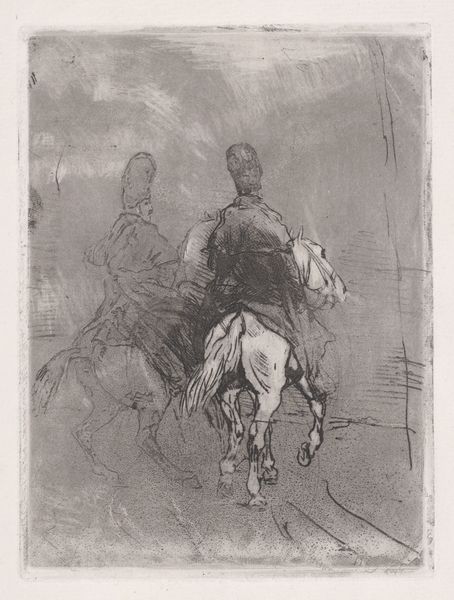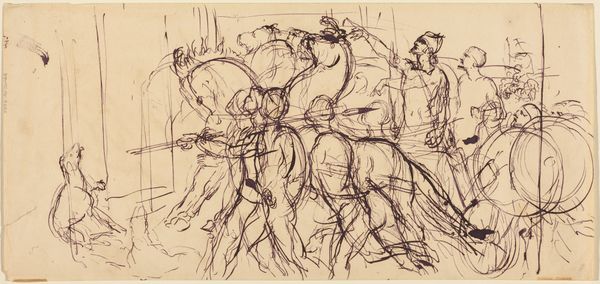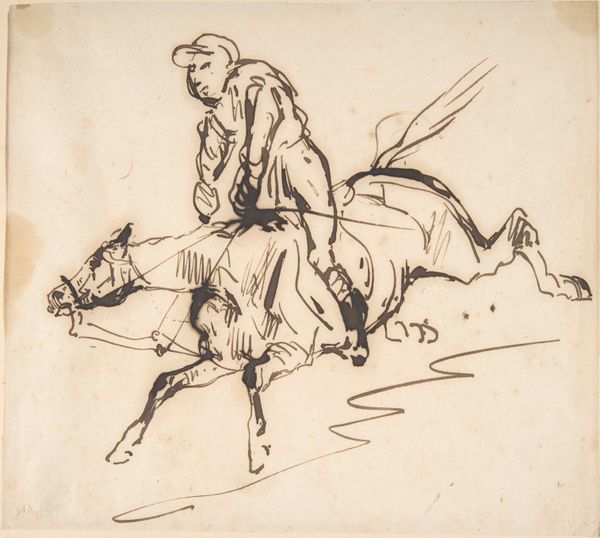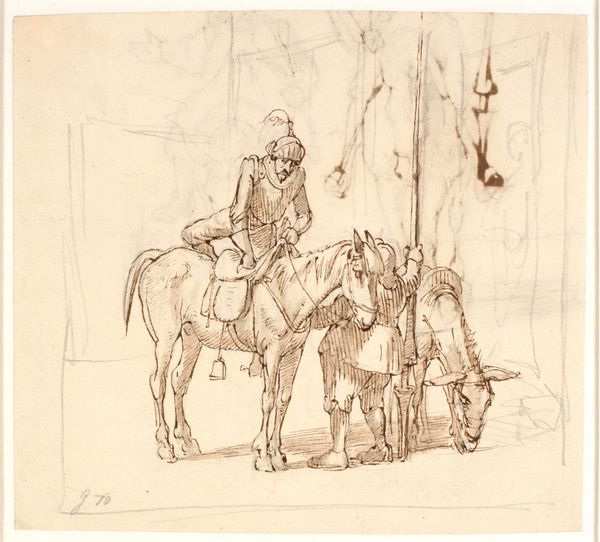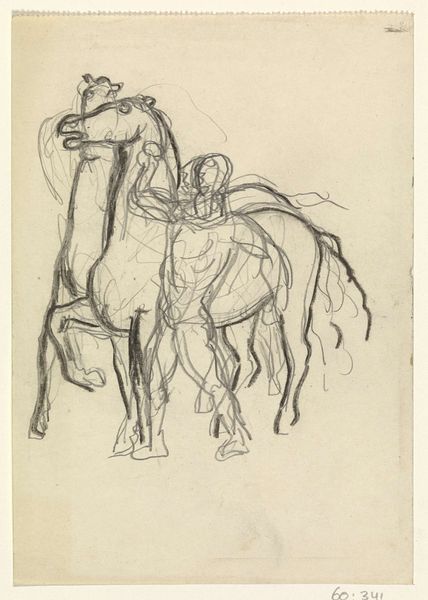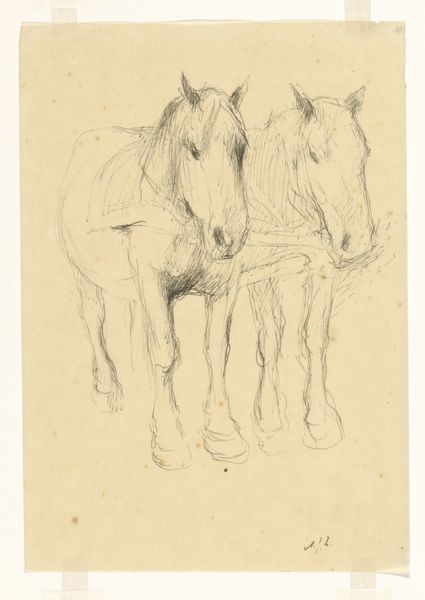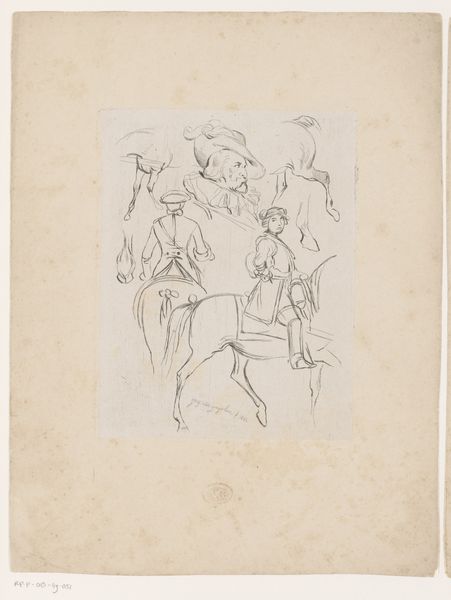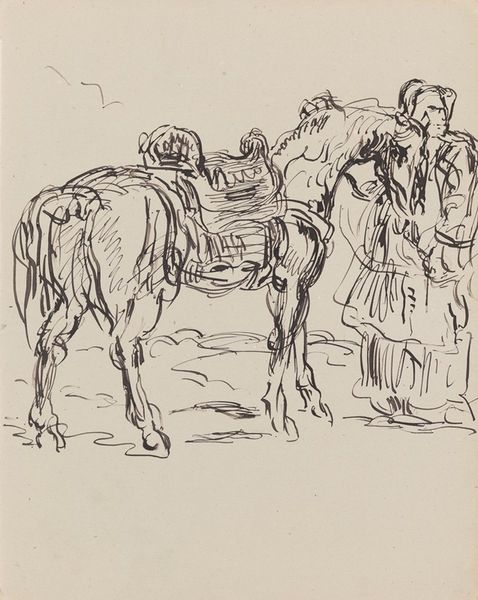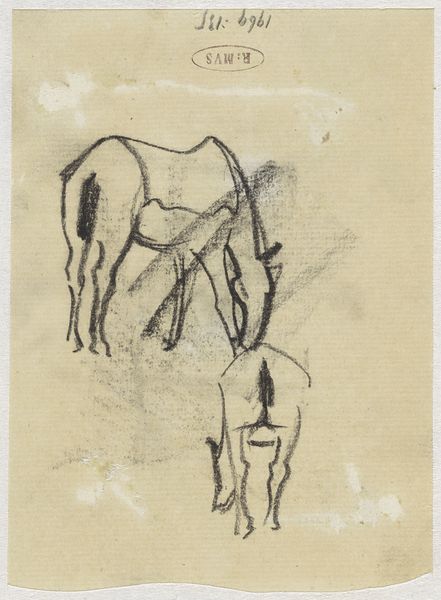
drawing, coloured-pencil, paper, pencil
#
portrait
#
drawing
#
coloured-pencil
#
landscape
#
figuration
#
paper
#
pencil
#
expressionism
Copyright: Public Domain
Editor: This is "Zwei reitende Artilleristen mit drei Pferden," or "Two Mounted Artillerymen with Three Horses," a colored pencil drawing by Ernst Ludwig Kirchner, from around 1915. I find the rendering of the figures somewhat unsettling. How do you interpret this work? Curator: Kirchner's engagement with the military during World War I is particularly fascinating. Given the date, the piece can be interpreted as an ambivalent depiction of military life, typical for his expressionist style. Notice how the disjointed figures and use of color might reflect the psychological toll of the war and Kirchner's complex relationship with the socio-political situation in Germany. Editor: I hadn’t thought of it that way. The fragmentation definitely suggests a sense of unease. The color choice adds another layer. Why do you call this ambivalent and complex? Curator: Kirchner initially volunteered for service, reflecting a sense of patriotic duty. However, he suffered a mental breakdown and was discharged. This drawing hints at his fractured perspective; it neither celebrates nor outright condemns the military, embodying instead the internal conflict experienced by many artists during this tumultuous period. Do you see how the stylized representation also served the need of him navigating conflicting public expectations and personal experiences? Editor: I do now. So, it's not just about personal trauma, but also how society shaped his artistic response to it. Curator: Exactly! And Expressionism became a channel to question prevailing norms about representing war. By displaying that tormented emotional interiority, it served a powerful socio-political function, opening spaces for dialogue around military service and mental health. Editor: That’s a really interesting way to consider how his personal struggles become a part of larger cultural narrative. I'll never look at Kirchner the same way again! Curator: Precisely. This examination underscores art's potent role as a public forum for debate and contemplation, particularly amidst historical upheaval.
Comments
No comments
Be the first to comment and join the conversation on the ultimate creative platform.

